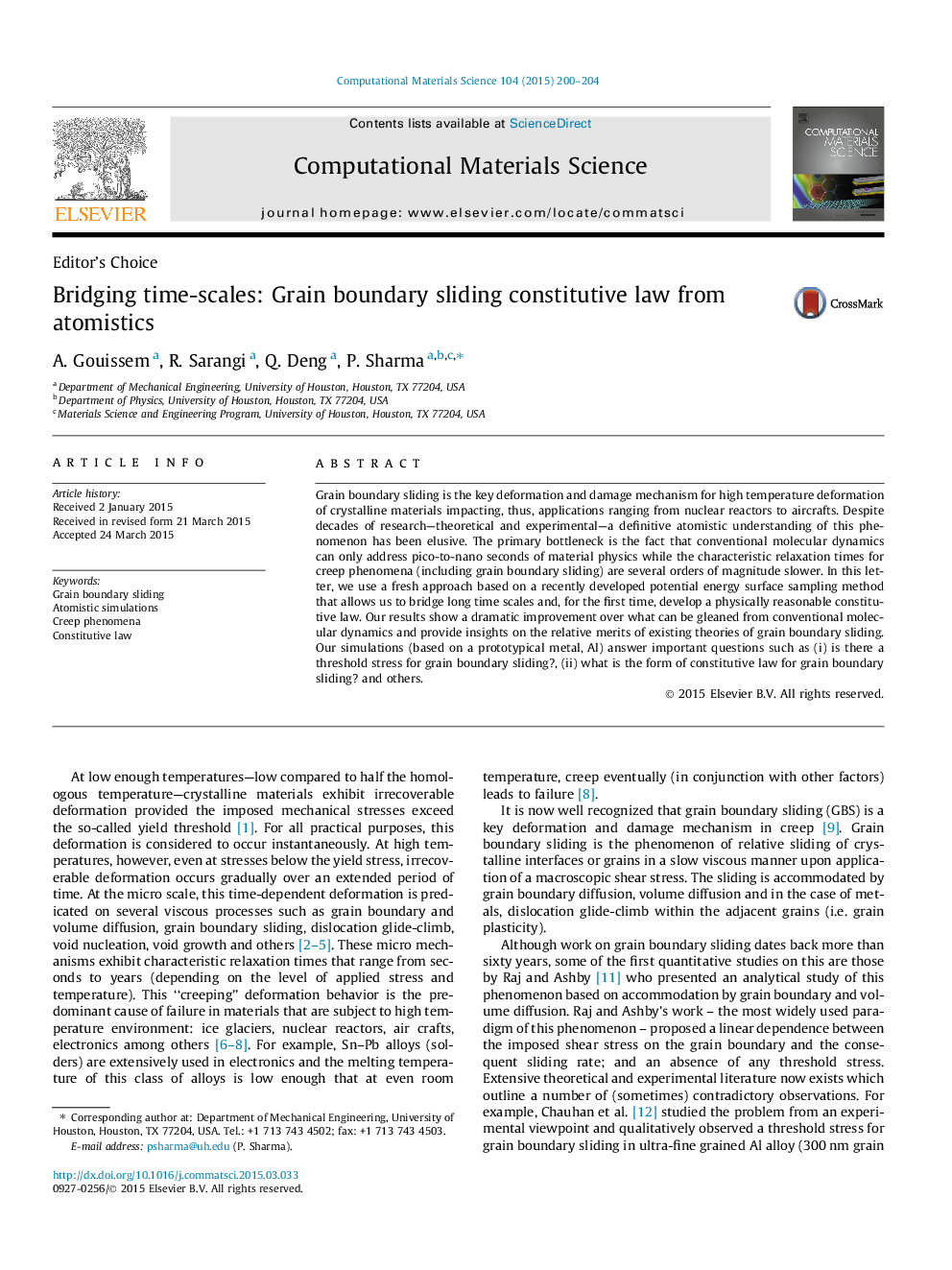| Article ID | Journal | Published Year | Pages | File Type |
|---|---|---|---|---|
| 1560221 | Computational Materials Science | 2015 | 5 Pages |
Grain boundary sliding is the key deformation and damage mechanism for high temperature deformation of crystalline materials impacting, thus, applications ranging from nuclear reactors to aircrafts. Despite decades of research—theoretical and experimental—a definitive atomistic understanding of this phenomenon has been elusive. The primary bottleneck is the fact that conventional molecular dynamics can only address pico-to-nano seconds of material physics while the characteristic relaxation times for creep phenomena (including grain boundary sliding) are several orders of magnitude slower. In this letter, we use a fresh approach based on a recently developed potential energy surface sampling method that allows us to bridge long time scales and, for the first time, develop a physically reasonable constitutive law. Our results show a dramatic improvement over what can be gleaned from conventional molecular dynamics and provide insights on the relative merits of existing theories of grain boundary sliding. Our simulations (based on a prototypical metal, Al) answer important questions such as (i) is there a threshold stress for grain boundary sliding?, (ii) what is the form of constitutive law for grain boundary sliding? and others.
Graphical abstractFigure optionsDownload full-size imageDownload as PowerPoint slide
